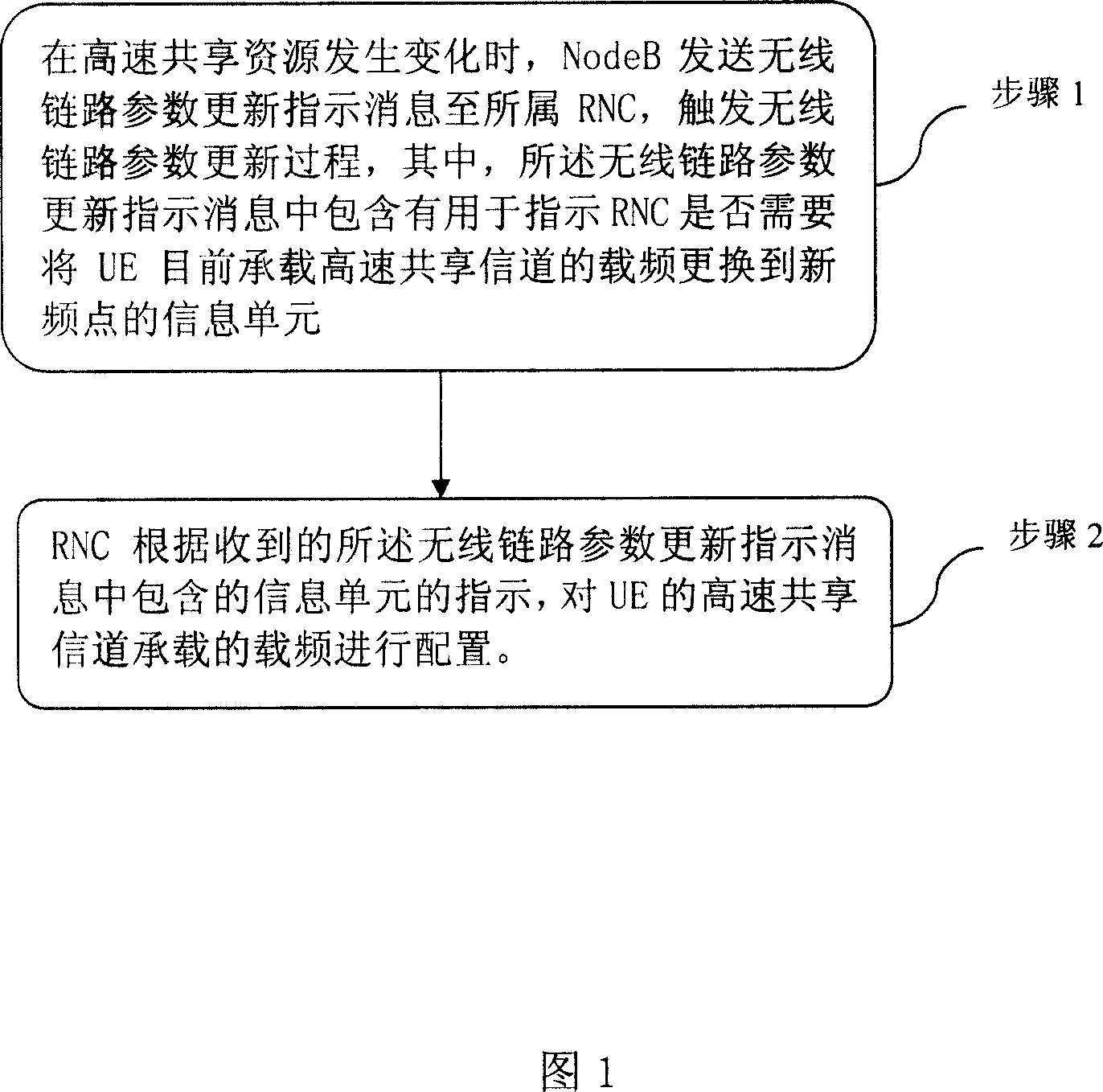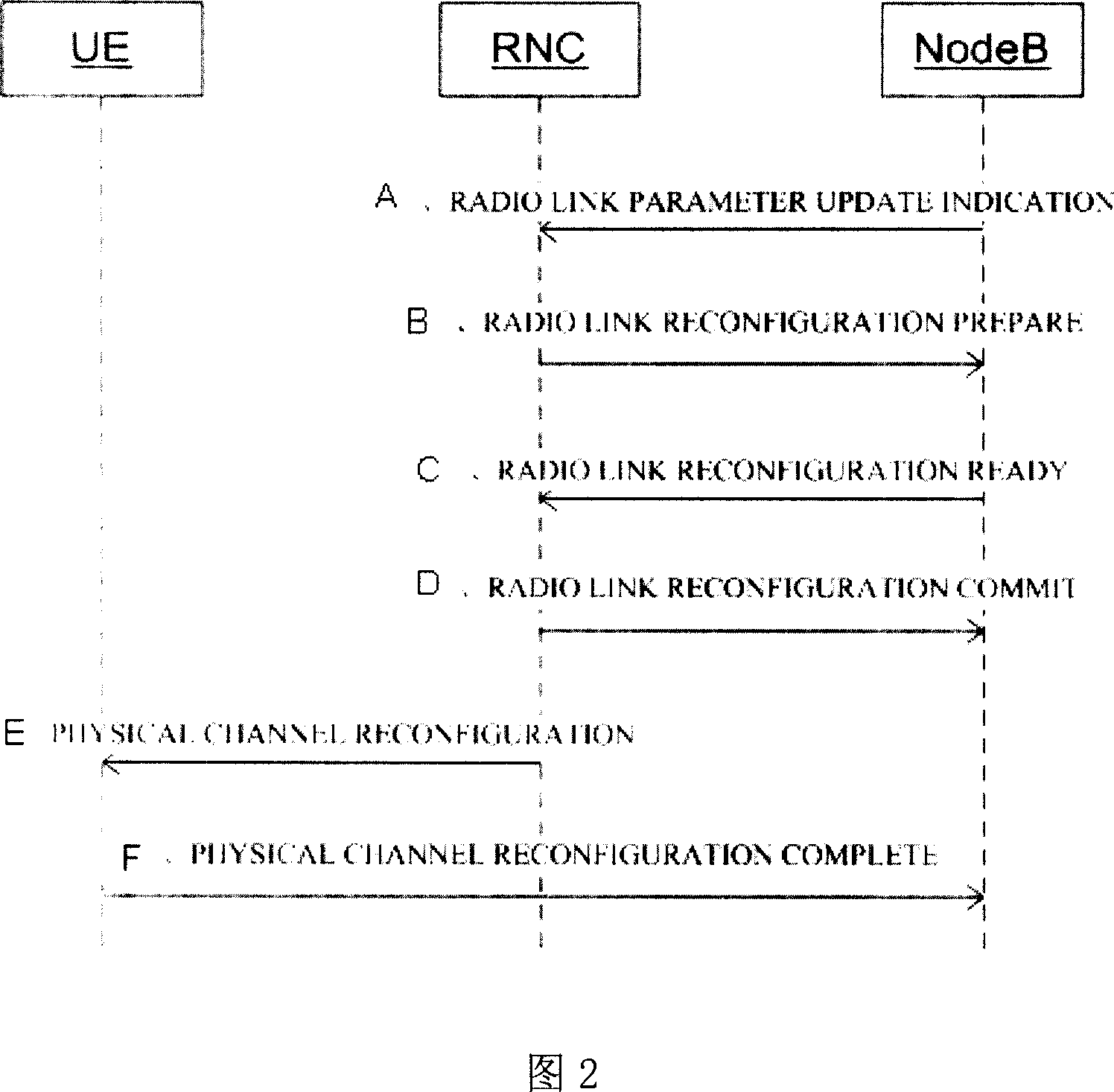A dynamic scheduling method for carrier resource
A dynamic scheduling and resource technology, applied in the field of wireless communication, to achieve the effect of optimizing technology and system, alleviating the decline of air interface quality, and improving system capacity
- Summary
- Abstract
- Description
- Claims
- Application Information
AI Technical Summary
Problems solved by technology
Method used
Image
Examples
Embodiment Construction
[0031] The core idea and various preferred embodiments of the present invention will be further described and illustrated in detail below with reference to the accompanying drawings.
[0032] The present invention provides a method for dynamic scheduling of carrier resources in a TD-SCDMA multi-carrier HSDPA system. The radio link update process provides relevant carrier frequency indication information, and requires the RNC to reconfigure the radio link, so as to reconfigure the UE to an appropriate carrier frequency.
[0033] Fig. 1 is the described step flowchart of the inventive method, as shown in Fig. 1, this method comprises following two steps:
[0034]Step 1: When the high-speed shared resource changes, the NodeB sends a radio link parameter update indication message to the RNC to which it belongs, triggering the radio link parameter update process, wherein the radio link parameter update indication message contains information for indicating whether the RNC An infor...
PUM
 Login to View More
Login to View More Abstract
Description
Claims
Application Information
 Login to View More
Login to View More - R&D
- Intellectual Property
- Life Sciences
- Materials
- Tech Scout
- Unparalleled Data Quality
- Higher Quality Content
- 60% Fewer Hallucinations
Browse by: Latest US Patents, China's latest patents, Technical Efficacy Thesaurus, Application Domain, Technology Topic, Popular Technical Reports.
© 2025 PatSnap. All rights reserved.Legal|Privacy policy|Modern Slavery Act Transparency Statement|Sitemap|About US| Contact US: help@patsnap.com


